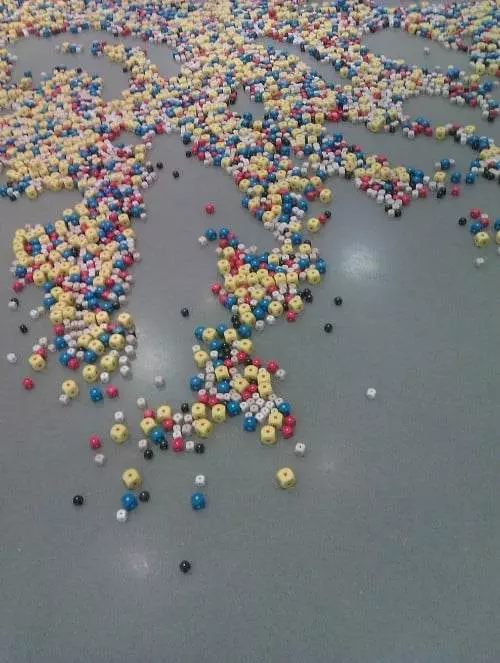The Henry Moore Institute has taken a punt with its latest exhibition, ‘Robert Filliou: The Institute of Endless Possibilities’. The exhibition seeks to explore the nature of gambling and the absurdity of games by utilising a bizarre array of cardboard boxes, double-sided playing cards and a dice-filled, room which were produced by Robert Filliou during the ‘70s and ‘80s.
Patrons are invited to learn the rules to the bizarre card game called ‘Leeds’. The game features double-sided playing cards and requires the players to be blindfolded while an onlooker makes bets. This is an exercise in pointlessness and ridiculousness, but it is one that can be quite appealing in the visual arts.
Other exhibits include a roulette wheel which helps patrons create random poetry, harking back to the ideas of writers like William S. Burroughs and Jack Kerouac.
What is perhaps most engaging about the show is presented in the final gallery. There is a room filled with 16,000 die. They can be manipulated by visitors to make forms and shapes of their own choosing without fear of being told off by the invigilators. Like the double-sided playing cards, the die are also unusable in in conventional games of chance – each dice only has the number one on each of their six sides, hence the title of the piece ‘Eins, Un, One’ – is the game rigged, or is it making a mockery of chance?
Some of the work on display could be quite confusing to people who are unfamiliar with conceptual art. This is not to say that it is a bad exhibition, but it may not appeal to a lay audience, and may indeed come across as being quite elitist and alienating. For example, the playing cards which are put on top of music stands are very strange and obscure, and even to those versed in conceptual art, this work is impenetrable to those of us who can’t speak French.
As with many of the exhibitions at the Henry Moore Institute, this show is limited by the building itself. The unusual space of the Institute – three different sized rooms – only serves to limit curatorial choices and makes the flow of many of their exhibitions seem incredibly samey.
Although the exhibition is by no means as dry as many of the Henry Moore Institute’s exhibitions between 2006 and 2010, ‘Robert Filliou: The Institute of Endless Possibilities’ is not one of their best. It’s a show with some quirky highlights, but will inevitably leave most visitors feeling bemused.
Follow: @Jon_Cronshaw

This sounds brilliant @Jon_Cronshaw – will go see this!